4-heptoxybenzoyl chloride
Modify Date: 2024-01-09 12:01:43
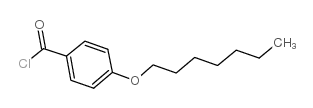
4-heptoxybenzoyl chloride structure
|
Common Name | 4-heptoxybenzoyl chloride | ||
|---|---|---|---|---|
| CAS Number | 40782-54-5 | Molecular Weight | 254.75200 | |
| Density | 1.066g/cm3 | Boiling Point | 348ºC at 760mmHg | |
| Molecular Formula | C14H19ClO2 | Melting Point | 226-227ºC | |
| MSDS | N/A | Flash Point | 131ºC | |
| Name | 4-heptoxybenzoyl chloride |
|---|---|
| Synonym | More Synonyms |
| Density | 1.066g/cm3 |
|---|---|
| Boiling Point | 348ºC at 760mmHg |
| Melting Point | 226-227ºC |
| Molecular Formula | C14H19ClO2 |
| Molecular Weight | 254.75200 |
| Flash Point | 131ºC |
| Exact Mass | 254.10700 |
| PSA | 26.30000 |
| LogP | 4.41480 |
| Index of Refraction | n20/D 1.533(lit.) |
Synonym:None Section 2 - COMPOSITION, INFORMATION ON INGREDIENTS
Risk Phrases: 34 Section 3 - HAZARDS IDENTIFICATION EMERGENCY OVERVIEW
Causes burns.Moisture sensitive.Corrosive. Potential Health Effects Eye: Causes eye burns. May cause chemical conjunctivitis and corneal damage. Skin: Causes skin burns. May cause skin rash (in milder cases), and cold and clammy skin with cyanosis or pale color. Ingestion: May cause severe and permanent damage to the digestive tract. Causes gastrointestinal tract burns. May cause perforation of the digestive tract. May cause systemic effects. Inhalation: May cause severe irritation of the respiratory tract with sore throat, coughing, shortness of breath and delayed lung edema. Causes chemical burns to the respiratory tract. Aspiration may lead to pulmonary edema. May cause systemic effects. Chronic: Effects may be delayed. Section 4 - FIRST AID MEASURES Eyes: Flush eyes with plenty of water for at least 15 minutes, occasionally lifting the upper and lower eyelids. Get medical aid immediately. Do NOT allow victim to rub eyes or keep eyes closed. Extensive irrigation with water is required (at least 30 minutes). Skin: Get medical aid immediately. Immediately flush skin with plenty of water for at least 15 minutes while removing contaminated clothing and shoes. Destroy contaminated shoes. Ingestion: Never give anything by mouth to an unconscious person. Get medical aid immediately. Do NOT induce vomiting. If conscious and alert, rinse mouth and drink 2-4 cupfuls of milk or water. Inhalation: Get medical aid immediately. Remove from exposure and move to fresh air immediately. If breathing is difficult, give oxygen. Do not use mouth-to-mouth resuscitation if victim ingested or inhaled the substance; induce artificial respiration with the aid of a pocket mask equipped with a one-way valve or other proper respiratory medical device. Notes to Physician: Section 5 - FIRE FIGHTING MEASURES General Information: As in any fire, wear a self-contained breathing apparatus in pressure-demand, MSHA/NIOSH (approved or equivalent), and full protective gear. During a fire, irritating and highly toxic gases may be generated by thermal decomposition or combustion. Extinguishing Media: Do NOT get water inside containers. In case of fire, use carbon dioxide, dry chemical powder or appropriate foam. Section 6 - ACCIDENTAL RELEASE MEASURES General Information: Use proper personal protective equipment as indicated in Section 8. Spills/Leaks: Absorb spill with inert material (e.g. vermiculite, sand or earth), then place in suitable container. Avoid runoff into storm sewers and ditches which lead to waterways. Provide ventilation. Do not get water inside containers. Section 7 - HANDLING and STORAGE Handling: Wash thoroughly after handling. Remove contaminated clothing and wash before reuse. Use only in a well-ventilated area. Do not breathe dust, vapor, mist, or gas. Do not get in eyes, on skin, or on clothing. Do not ingest or inhale. Do not allow contact with water. Discard contaminated shoes. Keep from contact with moist air and steam. Storage: Corrosives area. Keep containers tightly closed. Store protected from moisture. Store in a cool, dry area away from incompatible substances. Section 8 - EXPOSURE CONTROLS, PERSONAL PROTECTION Engineering Controls: Facilities storing or utilizing this material should be equipped with an eyewash facility and a safety shower. Use adequate ventilation to keep airborne concentrations low. Exposure Limits CAS# 40782-54-5: Personal Protective Equipment Eyes: Wear appropriate protective eyeglasses or chemical safety goggles as described by OSHA's eye and face protection regulations in 29 CFR 1910.133 or European Standard EN166. Skin: Wear appropriate protective gloves to prevent skin exposure. Clothing: Wear appropriate protective clothing to prevent skin exposure. Respirators: A respiratory protection program that meets OSHA's 29 CFR 1910.134 and ANSI Z88.2 requirements or European Standard EN 149 must be followed whenever workplace conditions warrant respirator use. Section 9 - PHYSICAL AND CHEMICAL PROPERTIES Physical State: Liquid Color: clear light yellow Odor: none reported pH: Not available. Vapor Pressure: Not available. Viscosity: Not available. Boiling Point: 226.0 - 227.0 deg C @ 30.00mm Freezing/Melting Point: Not available. Autoignition Temperature: Not applicable. Flash Point: > 112 deg C (> 233.60 deg F) Explosion Limits, lower: Not available. Explosion Limits, upper: Not available. Decomposition Temperature: Not available. Solubility in water: May decompose. Specific Gravity/Density: 1.0610g/cm3 Molecular Formula: C14H19ClO2 Molecular Weight: 254.76 Section 10 - STABILITY AND REACTIVITY Chemical Stability: Stable under normal temperatures and pressures. Moisture sensitive. Conditions to Avoid: Incompatible materials, moisture, strong oxidants. Incompatibilities with Other Materials: Moisture, water, alcohols, oxidizing agents, strong bases. Hazardous Decomposition Products: Hydrogen chloride, carbon monoxide, irritating and toxic fumes and gases, carbon dioxide, phosgene gas. Hazardous Polymerization: Has not been reported Section 11 - TOXICOLOGICAL INFORMATION RTECS#: CAS# 40782-54-5 unlisted. LD50/LC50: Not available. Carcinogenicity: 4-heptyloxybenzoyl chloride - Not listed by ACGIH, IARC, or NTP. Section 12 - ECOLOGICAL INFORMATION Section 13 - DISPOSAL CONSIDERATIONS Dispose of in a manner consistent with federal, state, and local regulations. Section 14 - TRANSPORT INFORMATION IATA Shipping Name: CORROSIVE LIQUID, N.O.S.* Hazard Class: 8 UN Number: 1760 Packing Group: II IMO Shipping Name: CORROSIVE LIQUID, N.O.S. Hazard Class: 8 UN Number: 1760 Packing Group: II RID/ADR Shipping Name: CORROSIVE LIQUID, N.O.S. Hazard Class: 8 UN Number: 1760 Packing group: II Section 15 - REGULATORY INFORMATION European/International Regulations European Labeling in Accordance with EC Directives Hazard Symbols: C Risk Phrases: R 34 Causes burns. Safety Phrases: S 24/25 Avoid contact with skin and eyes. S 26 In case of contact with eyes, rinse immediately with plenty of water and seek medical advice. WGK (Water Danger/Protection) CAS# 40782-54-5: No information available. Canada None of the chemicals in this product are listed on the DSL/NDSL list. CAS# 40782-54-5 is not listed on Canada's Ingredient Disclosure List. US FEDERAL TSCA CAS# 40782-54-5 is not listed on the TSCA inventory. It is for research and development use only. SECTION 16 - ADDITIONAL INFORMATION N/A |
| Hazard Codes | C: Corrosive; |
|---|---|
| Risk Phrases | 34-36/37 |
| Safety Phrases | 26-27-28-36/37/39-45 |
| RIDADR | UN 3265 8/PG 2 |
| WGK Germany | 3 |
| Packaging Group | III |
| HS Code | 2918990090 |
| Precursor 10 | |
|---|---|
| DownStream 3 | |
| HS Code | 2918990090 |
|---|---|
| Summary | 2918990090. other carboxylic acids with additional oxygen function and their anhydrides, halides, peroxides and peroxyacids; their halogenated, sulphonated, nitrated or nitrosated derivatives. VAT:17.0%. Tax rebate rate:13.0%. . MFN tariff:6.5%. General tariff:30.0% |
| 4-heptyloxybenzoic acid chloride |
| EINECS 255-077-5 |
| 4-(n-heptyloxy)benzoyl chloride |
| p-heptyloxybenzoyl chloride |
| 4-heptyloxy benzoyl chloride |
| 4-(Heptyloxy)benzoic chloride |
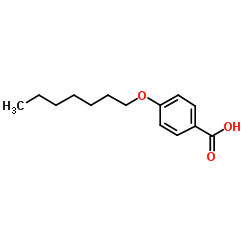 CAS#:15872-42-1
CAS#:15872-42-1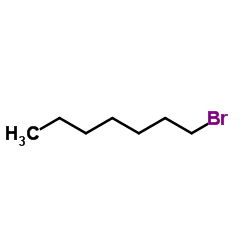 CAS#:629-04-9
CAS#:629-04-9 CAS#:79-37-8
CAS#:79-37-8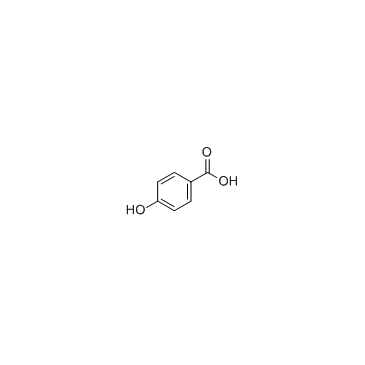 CAS#:99-96-7
CAS#:99-96-7 CAS#:154845-73-5
CAS#:154845-73-5 CAS#:120-47-8
CAS#:120-47-8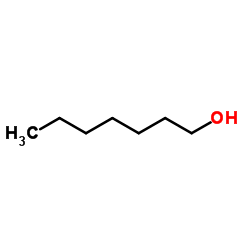 CAS#:111-70-6
CAS#:111-70-6 CAS#:16782-08-4
CAS#:16782-08-4 CAS#:4282-40-0
CAS#:4282-40-0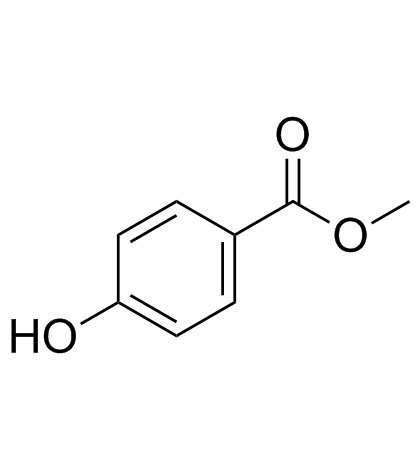 CAS#:99-76-3
CAS#:99-76-3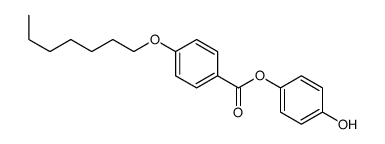 CAS#:33905-65-6
CAS#:33905-65-6 CAS#:61519-00-4
CAS#:61519-00-4 CAS#:61519-01-5
CAS#:61519-01-5